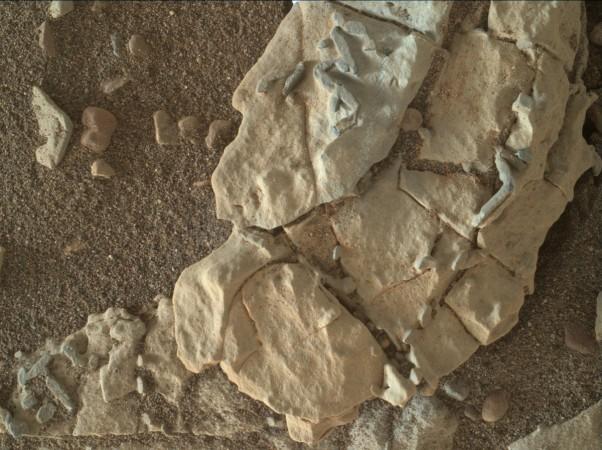
NASA's Curiosity Mars Rover discovered some dark bumps on a Martian ridge last month, which scientists say are very much like gypsum crystals that are formed in drying lakes on Earth. However, alien-enthusiasts have a totally different take on them.
Dr Barry DiGregorio, who is a research fellow for the Buckingham Centre for Astrobiology, said these crystal-shaped features are proof of alien life on the Red Planet. He also said, according to WKBW, it looked like traces of fossils found in western New York.
DiGregorio told Daily Star Online he thinks these are proof of "soft-bodied creatures" that inhabited the planet around 700 million years ago. He also speculated that these creatures moved through "mud-like sediments".
Trace fossils are not body fossils, which preserve remains of the body of the actual animal itself. They rather preserve imprints like footprints, tracks, burrows, borings, and even feces.
The expert has now asked NASA to investigate the dark bumps further.
"NASA is saying they are crystals... And I think that NASA has a duty to own up to the truth and tell people around the world about life on Mars," said DiGregorio, as reported by the website.
Meanwhile, a NASA spokesman said its Curiosity team is considering all possibilities during its efforts to determine the origin of the crystal-shaped features.
The tiny and dark bumps are smaller than a sesame seed. Curiosity's science team is currently trying to figure out when the features were formed.
Researchers believe the dark bumps can help them come up with evidence of groundwater on the Red Planet.
"These shapes are characteristic of gypsum crystals. These can form when salts become concentrated in water, such as in an evaporating lake," said Sanjeev Gupta, a Curiosity science team member at Imperial College, London, in a statement from NASA's Jet Propulsion Laboratory.

















